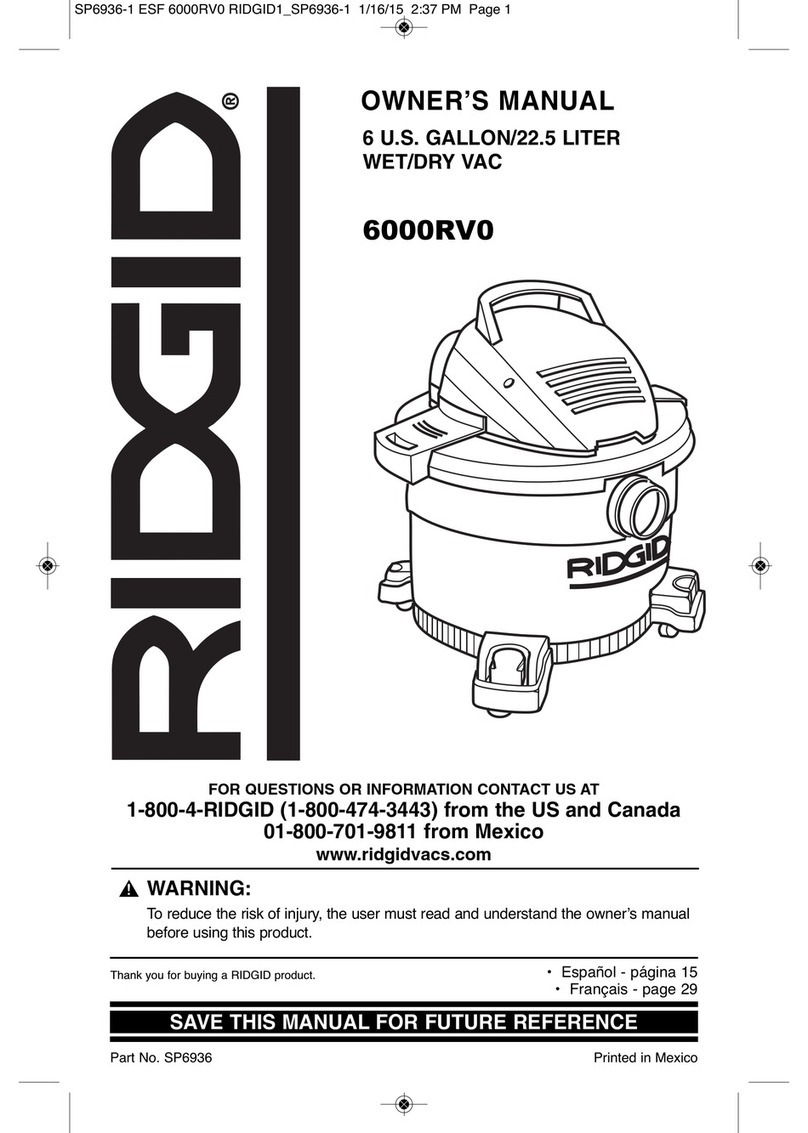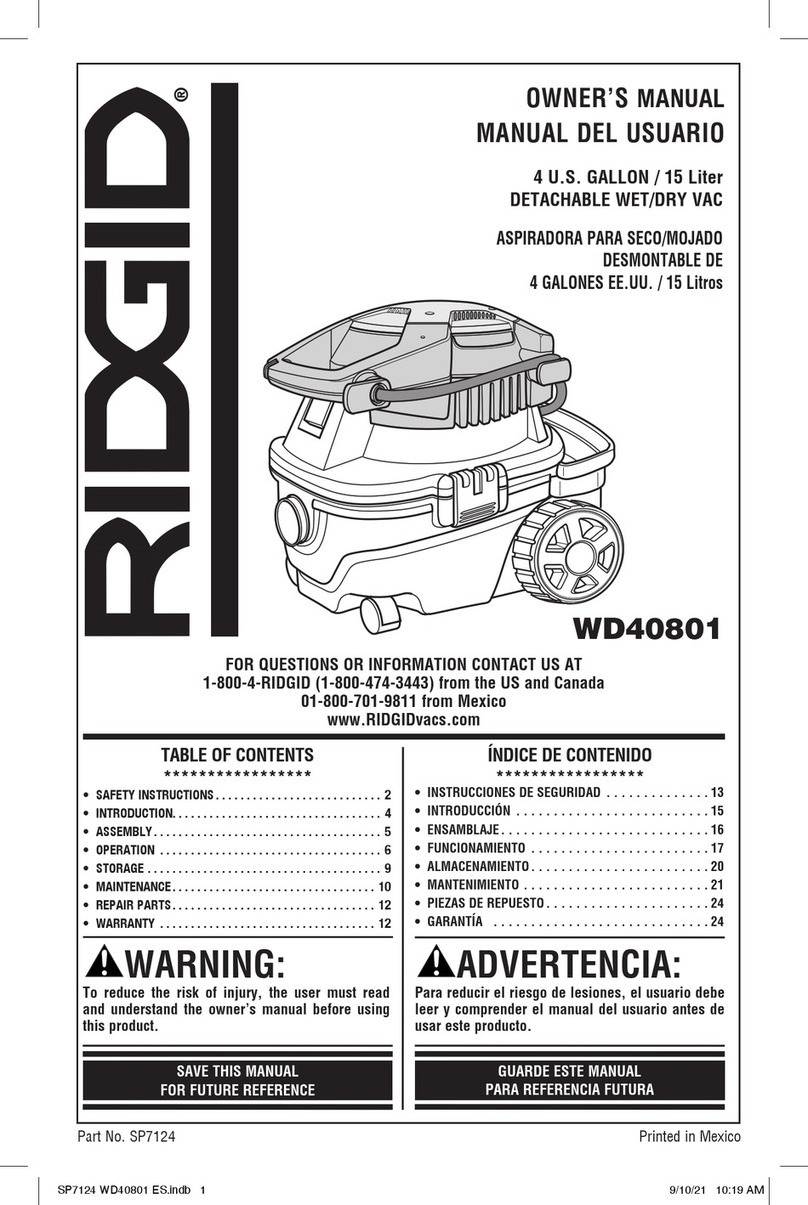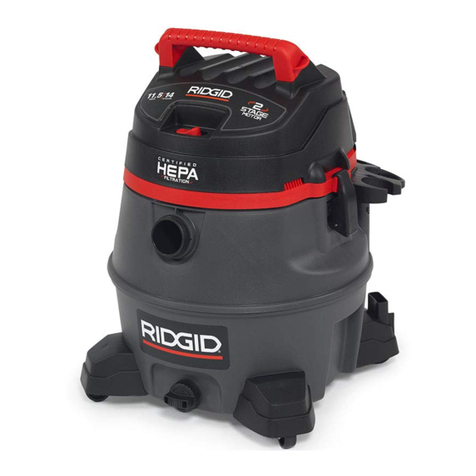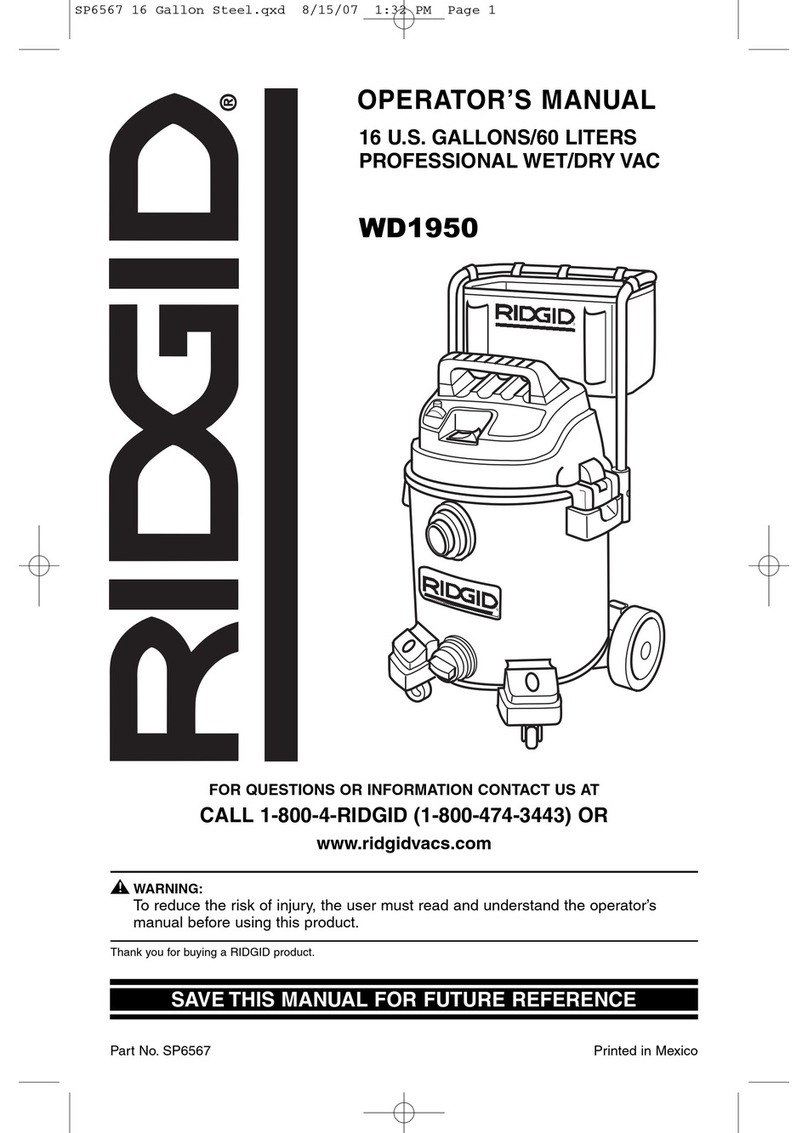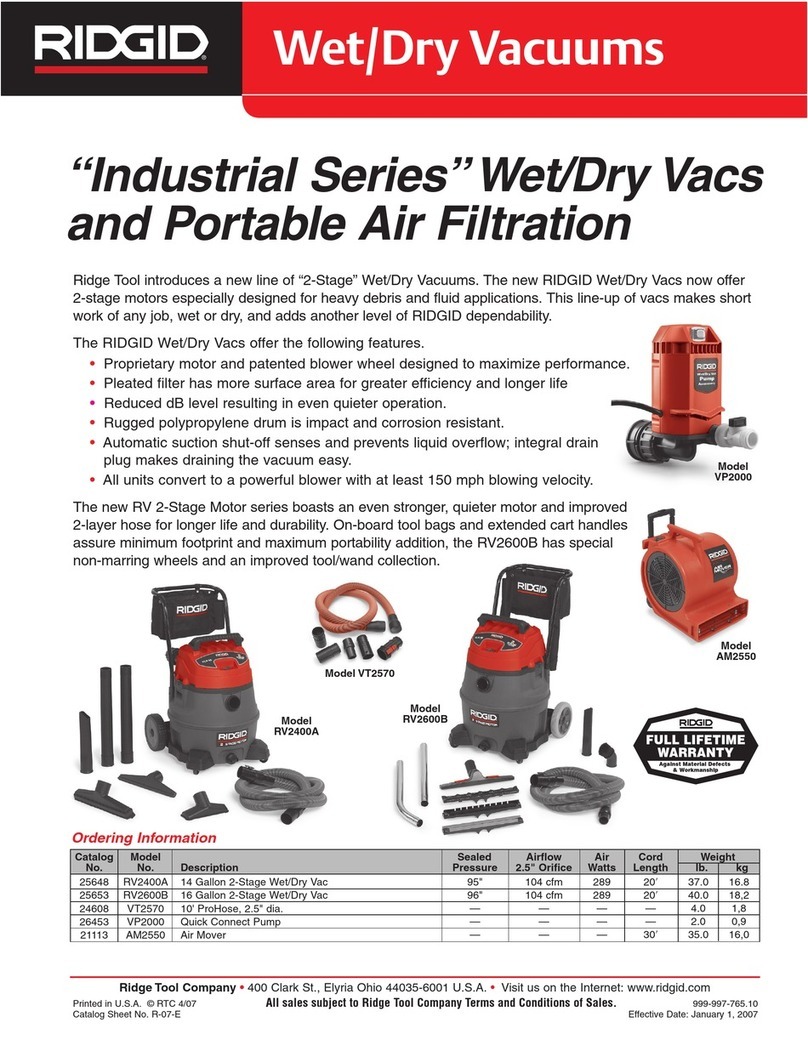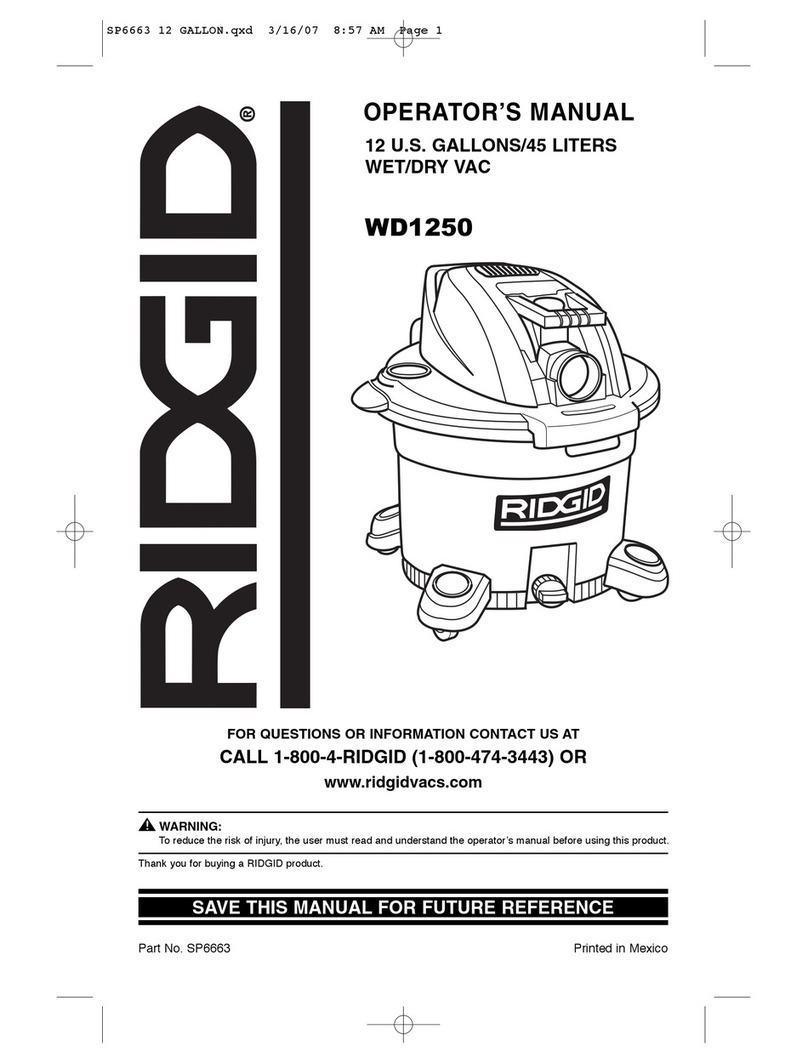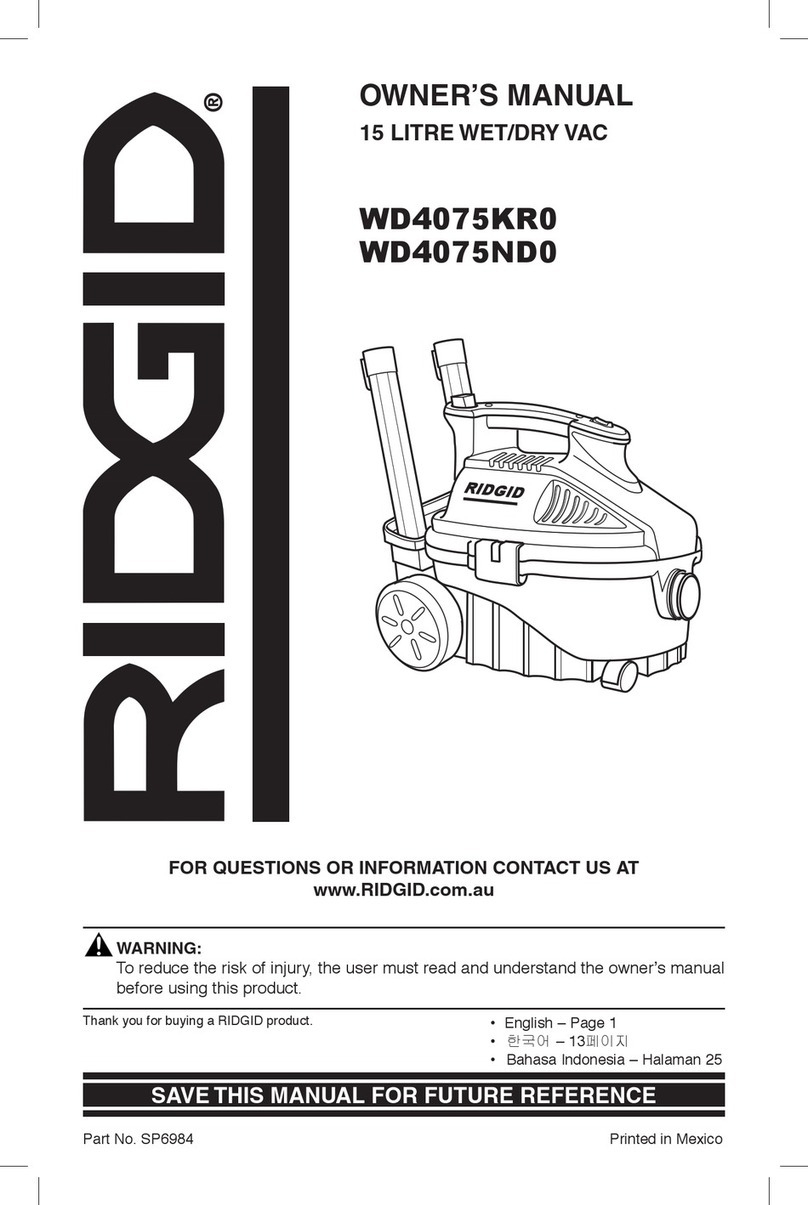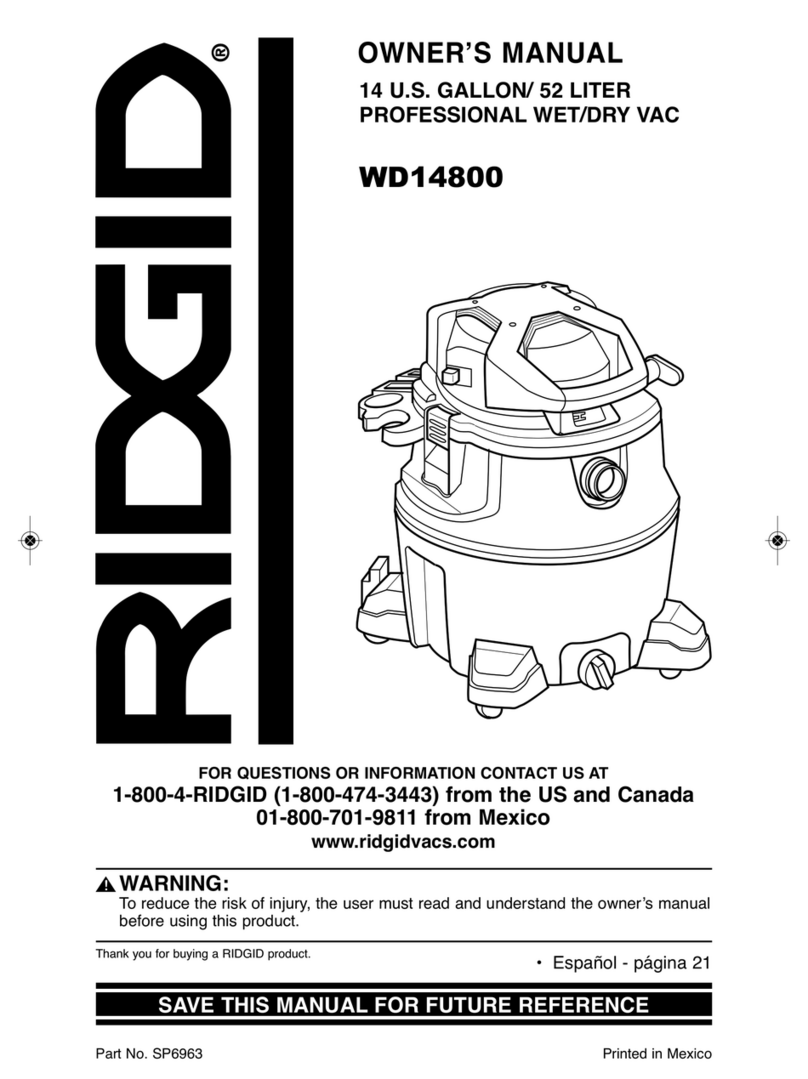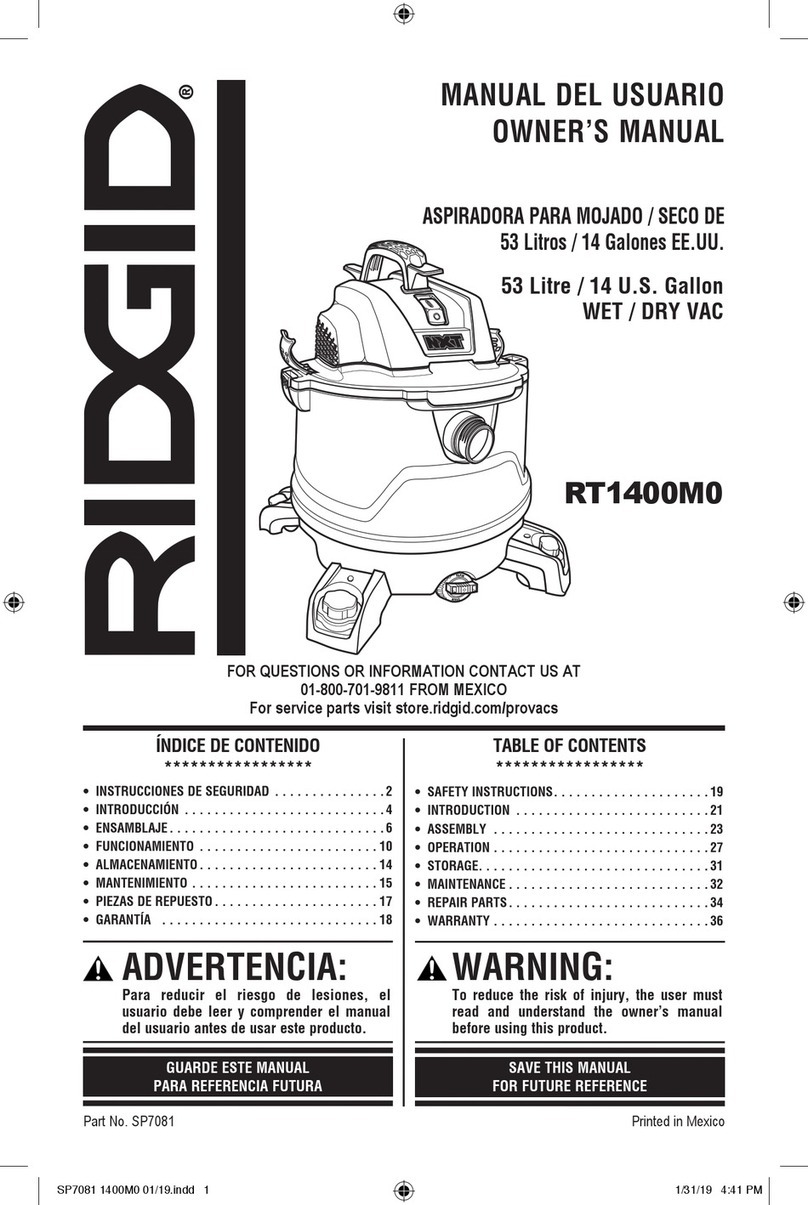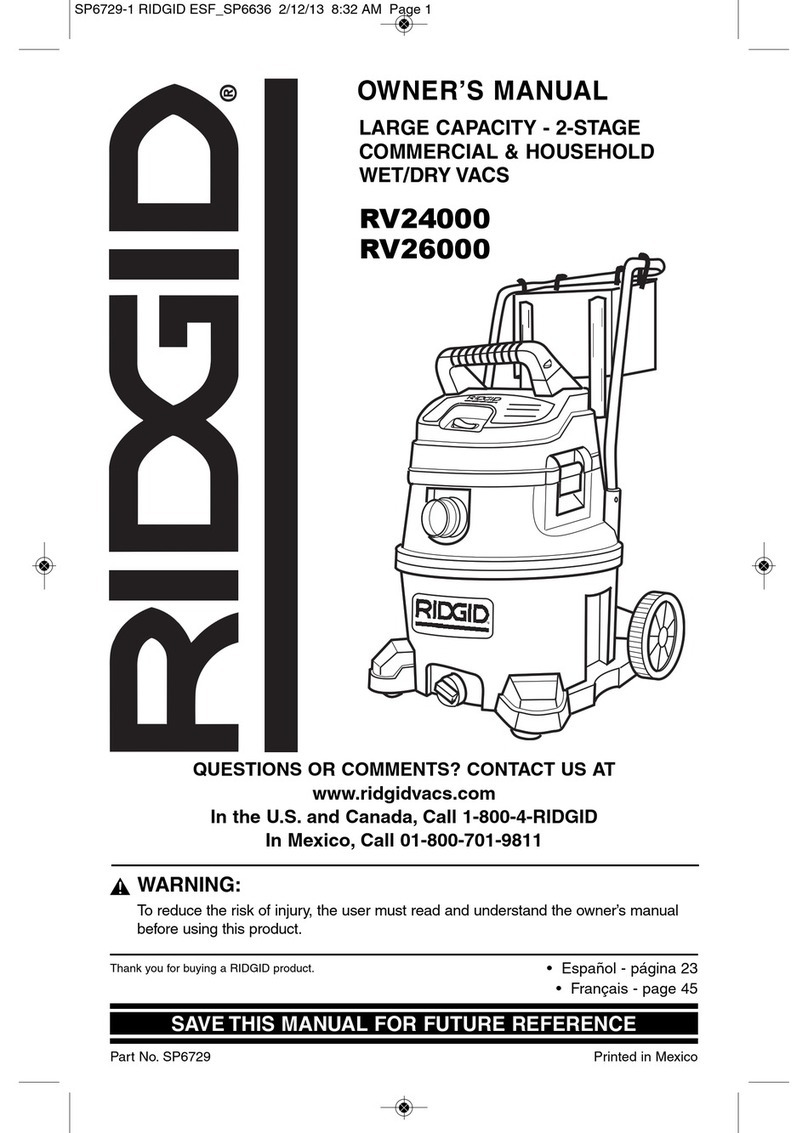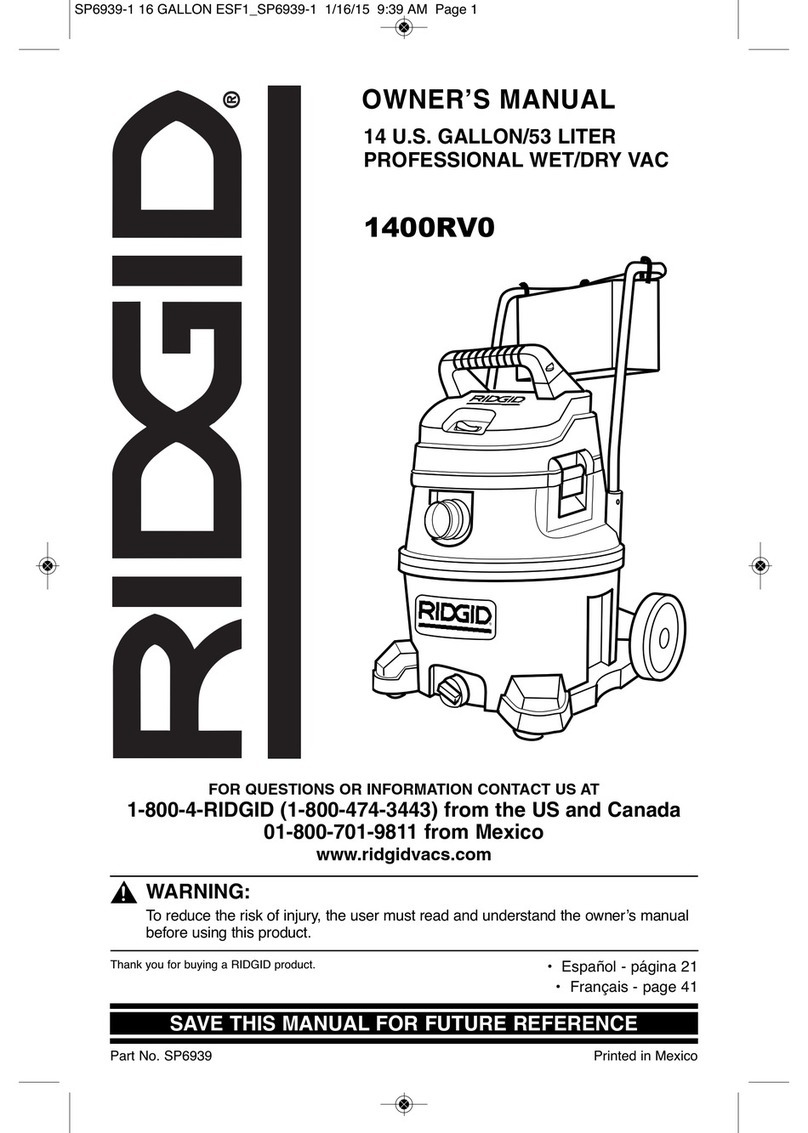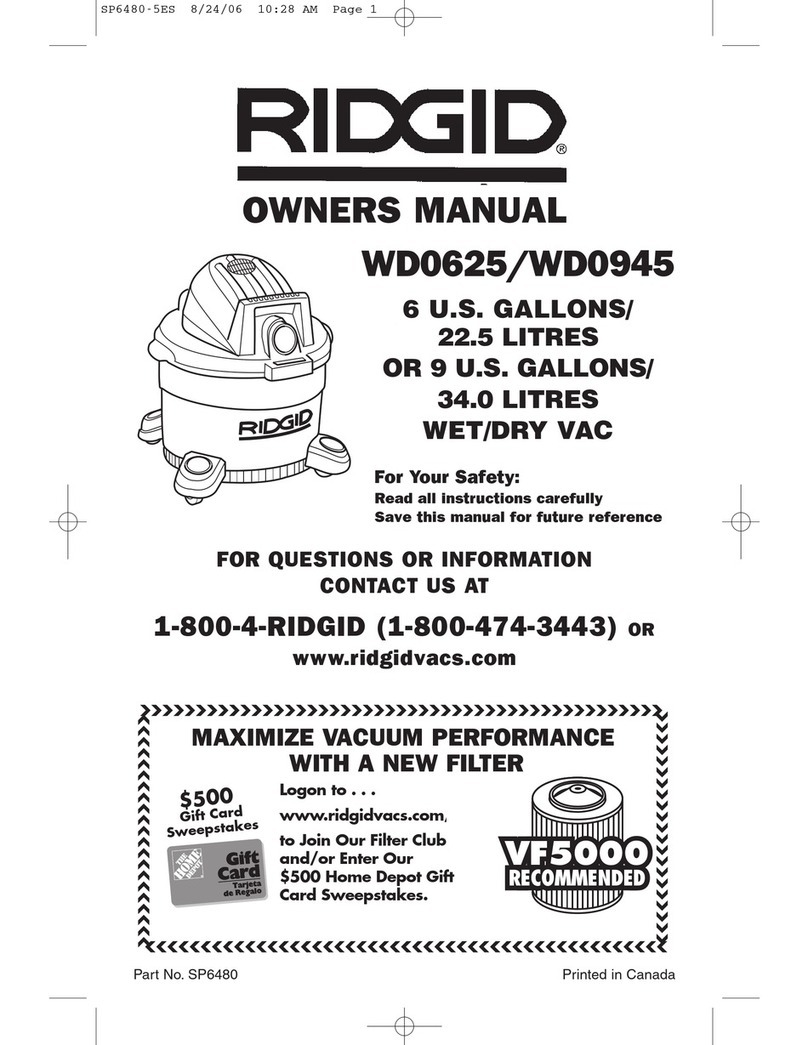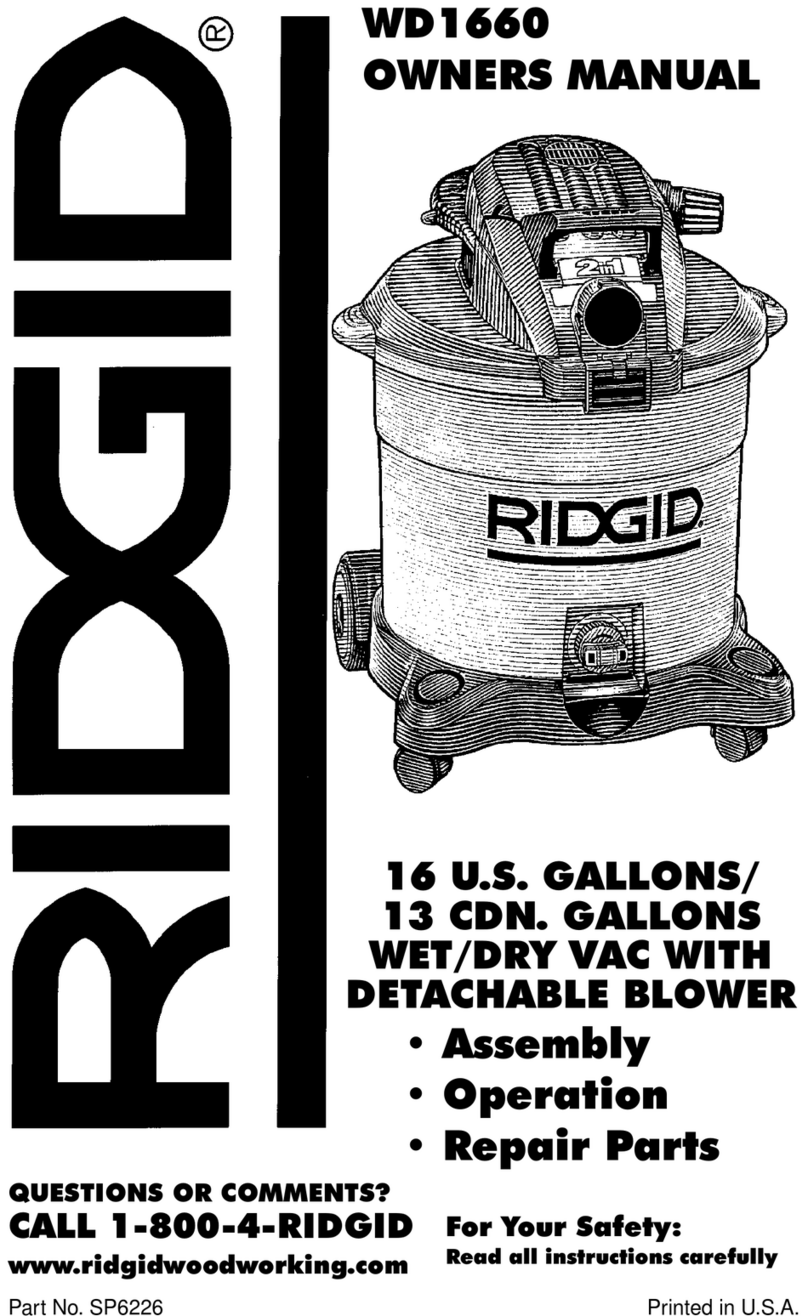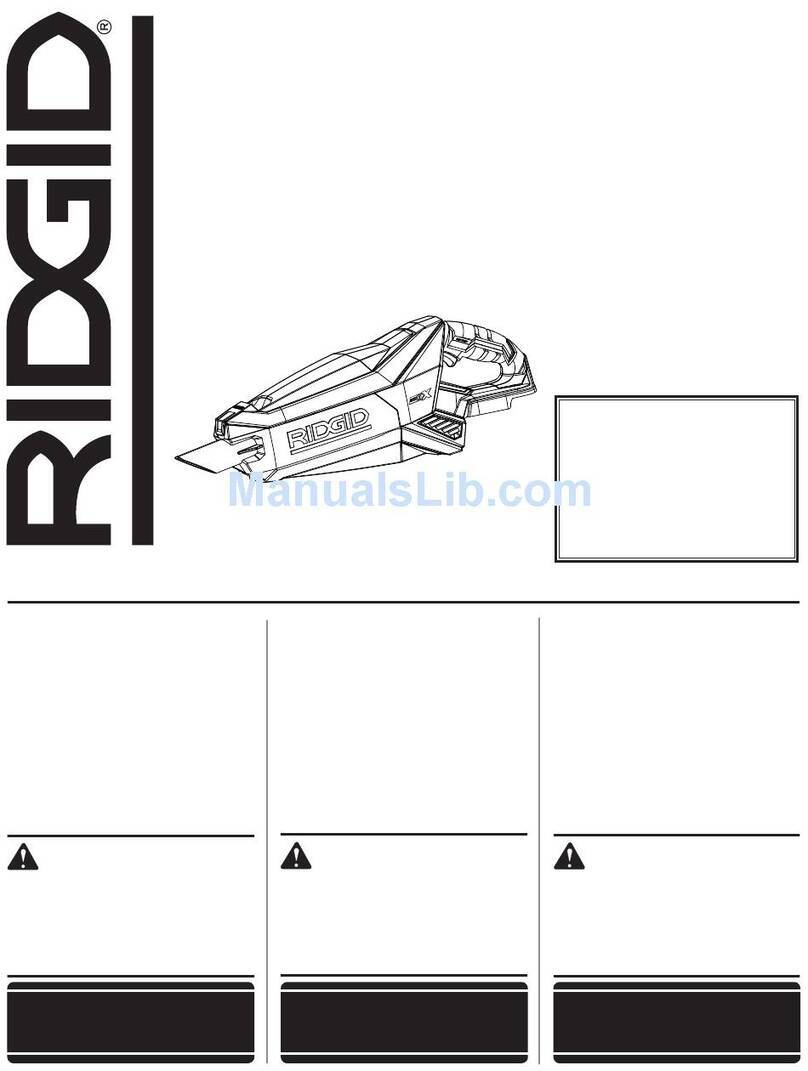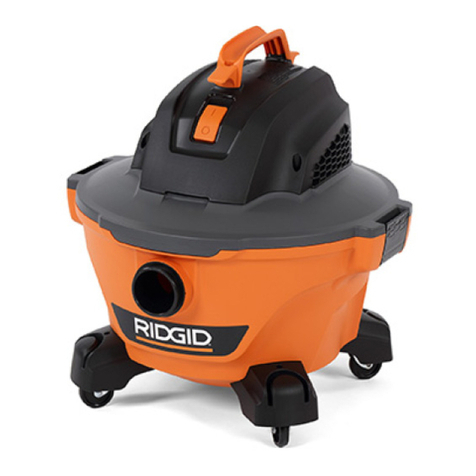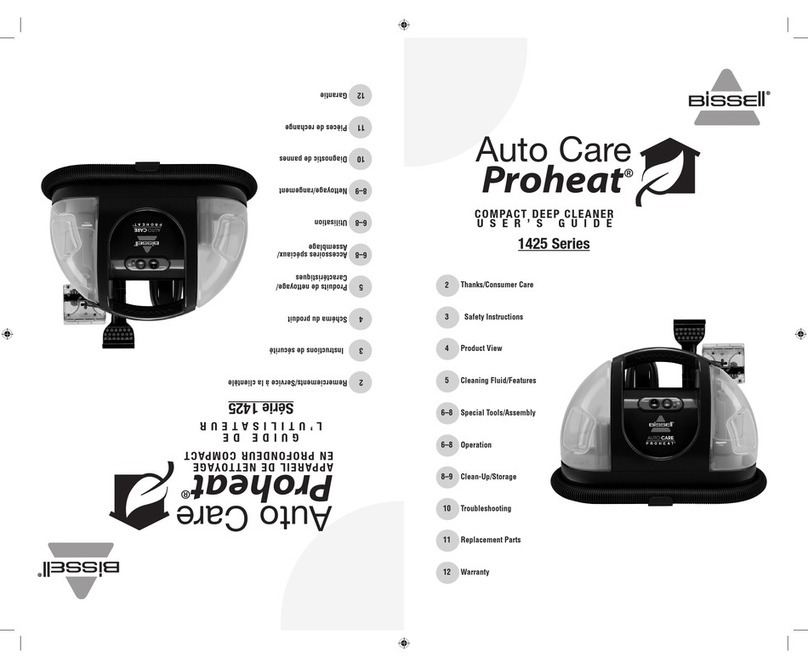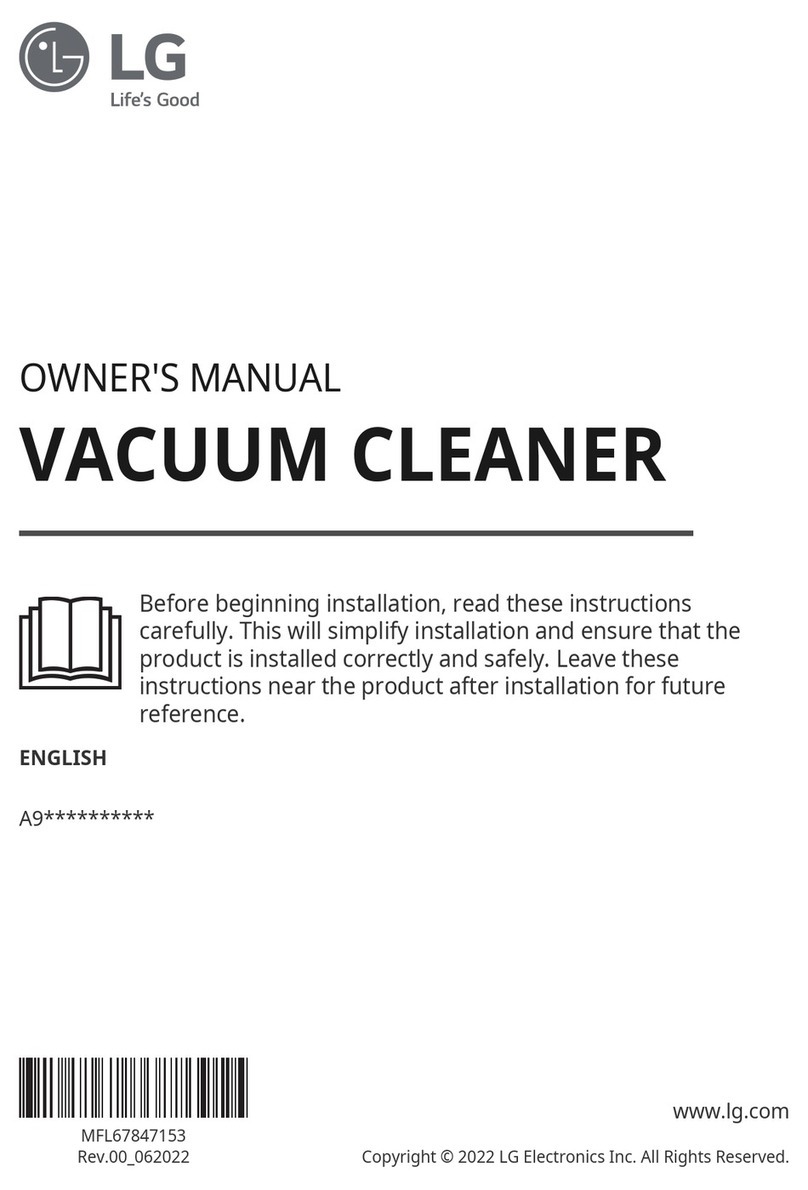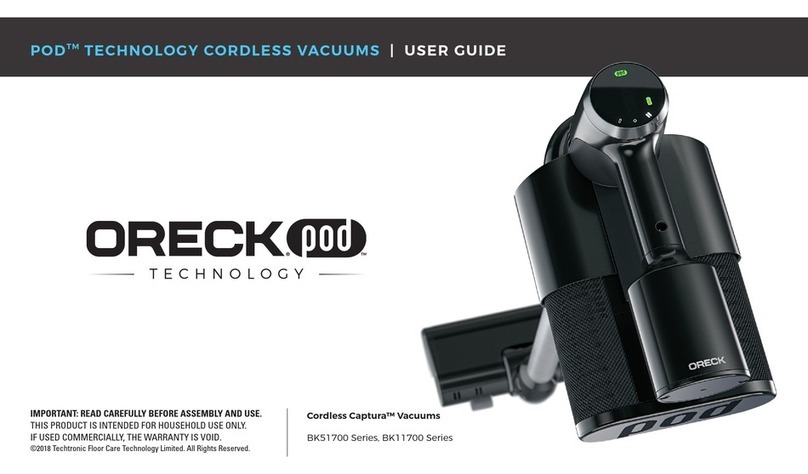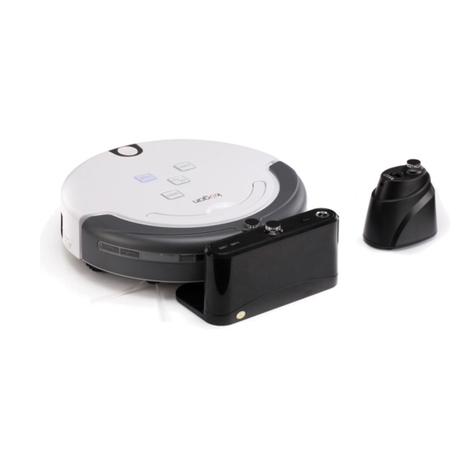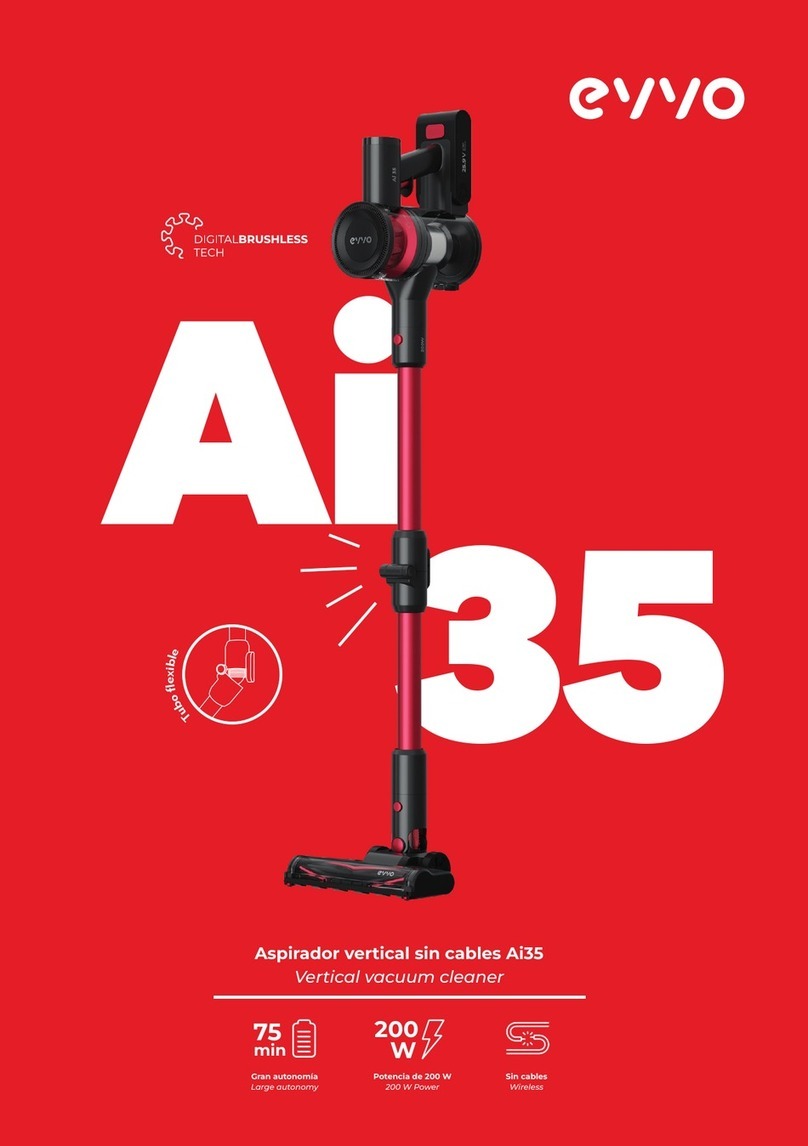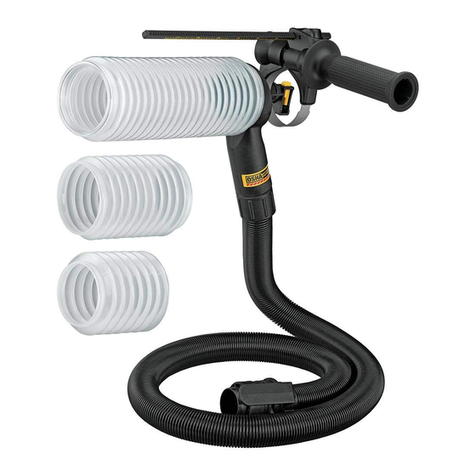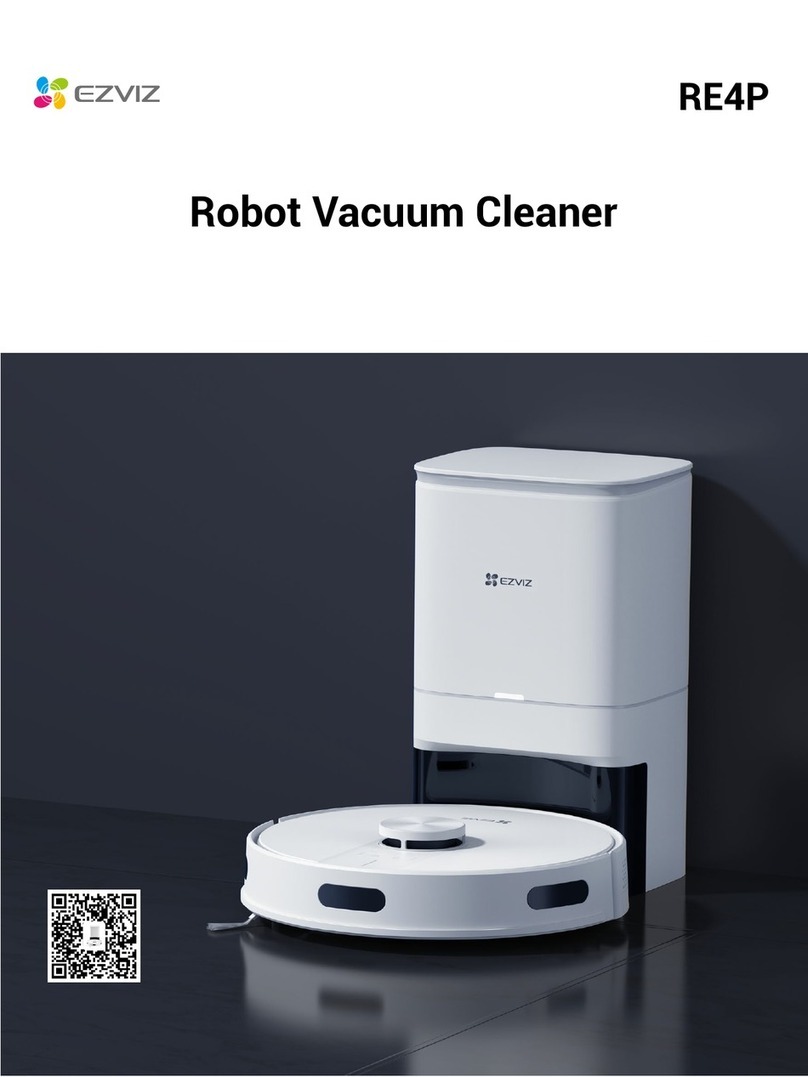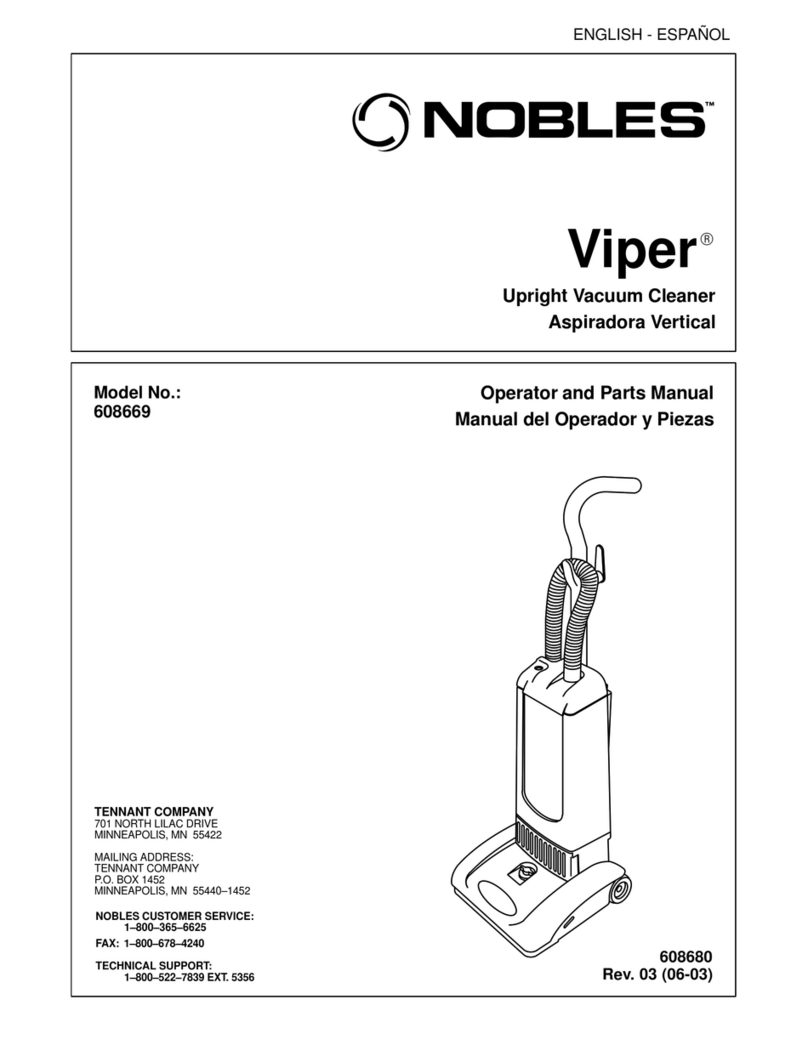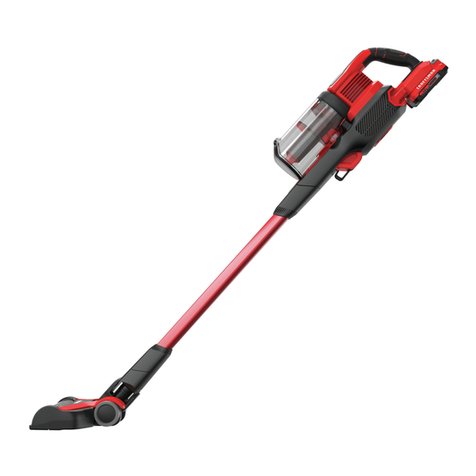
2
Table of Contents
Section Page Section Page
Important Safety Instructions............... 2-3
Introduction............................................. 4
Unpacking and Checking
Carton Contents .................................. 4
Caster/Caster Foot Assembly................. 4
Wet/Dry Vac Assembly ........................... 5
Insert Hose .......................................... 5
Operation............................................. 6-8
Vacuuming Dry Materials..................... 7
Vacuuming Liquids .............................. 7
Emptying the Drum.............................. 7
Blowing Feature................................... 8
To Store Your Accessories...................... 9
Maintenance.................................... 10-12
Filter Removal and Installation
of the Qwik Lock Filter.................... 10
Cleaning A Dry Filter...........................11
Cleaning A Wet Filter ..........................11
Cleaning and Disinfecting
the Wet/Dry Vac...............................11
Cord Maintenance ............................. 12
Storage.............................................. 12
Casters .............................................. 12
Repair Parts..................................... 14-15
IMPORTANT SAFETY INSTRUCTIONS
Safety is a combination of using common
sense, staying alert and knowing how your
Wet/Dry Vacuum Cleaner (“Vac”) works.
Safety Signal Words
DANGER: Indicates a hazardous
situation which, if not avoided, will result
in death or serious injury.
WARNING: Indicates a hazardous
situation which, if not avoided, could
result in death or serious injury.
CAUTION: Indicates a hazardous
situation which, if not avoided, could
result in minor or moderate injury.
When using your Vac, always follow basic
safety precautions including the following:
WARNING
- To reduce the risk of fire, electric
shock, or injury:
• Read and understand this manual and
all labels on the Wet/Dry Vac before
operating.
• Use only as described in this manual.
• Do not leave Vac running while
unattended – you may fail to notice
important signs indicating abnormal
operation such as loss of suction, debris/
liquid exiting the exhaust or abnormal
motor noises. Immediately stop using
Vac if you notice any of these signs.
• Do not leave Vac plugged in when not in
use and before servicing.
• Sparks inside the motor can ignite
ammable fumes or dust. To reduce the
risk of re or explosion, do not use near
combustible liquids, gases or dusts,
such as petrol or other fuels, lighter uid,
cleaners, oil-based paints, natural gas,
coal dust, magnesium dust, grain dust,
aluminium dust or gunpowder.
• Do not vacuum anything that is burning
or smoking, such as cigarettes, matches
or hot ashes.
• Do not vacuum plasterboard or plaster
dust, cold replace ash or other ne
dusts with the standard lter. These may
pass through the lter and be exhausted
back into the air. Use a ne dust lter
instead.
• To reduce the risk of inhaling toxic
fumes, do not vacuum or use near toxic
or hazardous materials.
• To reduce the risk of electric shock, do
not expose the Vac to rain or allow liquid
to enter motor compartment. Store the
Vac indoors.
• This vacuum cleaner is not intended for
use by persons (including children) with
reduced physical, sensory or mental
capabilities, or lack of experience and
knowledge, unless they have been given
supervision or instruction concerning
use of the vacuum cleaner by a person
responsible for their safety.
• Do not allow Vac to be used as a toy.
Close attention is necessary when used
by or near children.
• Do not use with a torn lter or without
the lter installed except when
vacuuming liquids as described in this
manual. Dry debris ingested by the
